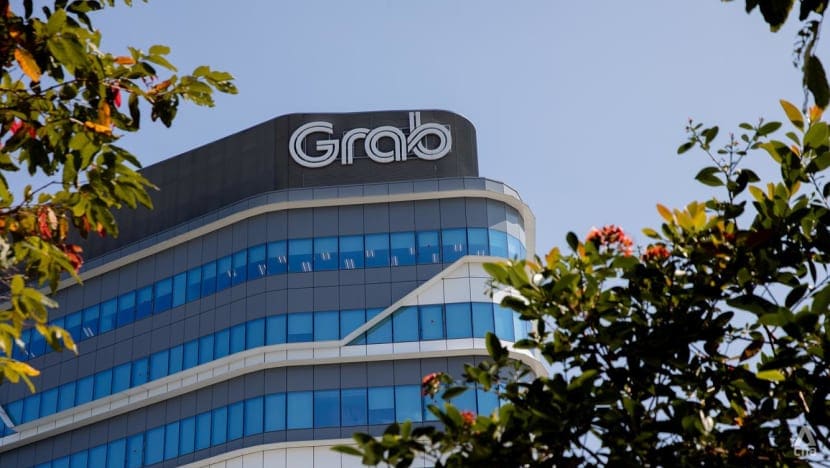Commentary: Has Grab hit a turning point in its quest to become profitable?
Amid talk of a merger with Indonesian rival GoTo, Grab sends a message about balancing strong growth and sustained profitability, says Momentum Works’ Li Jianggan.


This audio is generated by an AI tool.
SINGAPORE: For the first time, Grab posted an annual profit on an adjusted basis in 2024. It’s not profitable just yet: The Singapore-headquartered, Nasdaq-listed tech firm still reported an overall loss, though it improved markedly compared to 2023.
But it is still an important milestone. More than a numbers game, the company’s fourth-quarter financial report delivered a significant message: It is back to strong growth after slowing down on its journey toward sustained profitability.
A key achievement was reaching a record US$313 million in annual group adjusted EBITDA – or Earnings Before Interest, Taxes, Depreciation and Amortisation, an industry metric of performance. It is a staggering improvement of US$335 million that brought it into the black from last year.
For those who see EBITDA as an incomplete measure, a second crucial indicator is its adjusted free cash flow, which also turned positive in 2024. Although adjusted profit metrics may lag behind, this shows that Grab is creating real value and successfully converting growth into tangible cash generation.
The other metric to keep an eye on is on-demand Gross Merchandise Value (GMV), with double-digit increases in GMV, for both deliveries and ride-hailing.
Grab's challenge has been to transition from reliance on aggressive subsidies toward a model based on organic growth and operational efficiency. Taking the reported metrics together, they suggest that Grab’s operational improvements are beginning to pay off and customers are responding well to its strategy.Â
A COMPETITIVE SOUTHEAST ASIA LANDSCAPE
Despite its progress, Southeast Asia remains a highly competitive market. In mobility, Grab has effectively fended off low-cost competitors like InDrive and Maxim, although the competitive pressure persists.
In the food delivery segment, Grab leads in all its markets, with market share also being more consolidated among the second-largest players such as ShopeeFood and LineMan. According to a Momentum Works report released in February, in Indonesia, ShopeeFood quietly achieved an 18 per cent market share in 2024 and is poised to challenge existing leaders.
This data underscores that even in markets where Grab currently leads, competitive dynamics are constantly evolving.
Consumer incentives remain critical for user acquisition and retention but can erode margins if not managed carefully. This will require careful calibration of promotional spending while maintaining a product mix that continues to attract and satisfy a diverse customer base.
Its tiered service offering has allowed Grab to extract incremental value from each customer group by charging according to their willingness to pay. The company reported an increase in users opting for “saver” and “priority” deliveries, the least and most costly delivery fee tiers respectively.
POTENTIAL MERGER WITH GOTO
Recent discussions have revived speculation about a potential merger with its Indonesia-based rival GoTo, parent company of Gojek.
In an environment where both companies are working to improve profitability, a well-integrated merger might streamline operations and reduce redundant costs, thereby accelerating the path to sustained profitability.
However, the possibility of a merger comes with its own set of challenges. Integrating companies with different corporate cultures, strategies, and cost structures is inherently complex.
Then there are competition rules. Grab and GoTo have strong positions in key markets like Indonesia and Singapore, where antitrust authorities are attentive to market concentration.
A combined entity, with as much as 80 to 90 per cent market share, could raise regulatory concerns, potentially resulting in forced divestitures or operational restrictions. Grab’s plan to acquire Singapore taxi operator Trans-cab was called off in July 2024.
Even with a merger, competition is unlikely to disappear entirely. Other players remain vigilant; if pricing or commission structures change unfavourably, others like Shopee, Meituan or Didi might seize the opportunity to expand their market share.
PREPARE FOR THE AI DISRUPTION
Another challenge, not just for Grab but the whole platform sector, will inevitably be artificial intelligence.
During the earnings call in February, Grab’s management noted that emerging technologies such as AI and autonomous vehicles may have the potential to influence mobility and delivery services. Although the extent of their impact is still uncertain, these investments could enhance operational efficiency, enable more personalised customer experiences and refine pricing strategies.
But other major players in the ecosystem are also doing the same. GoTo introduced an AI-enabled voice assistant in Bahasa Indonesia last year, and launched a large language model ecosystem designed for regional languages with Nvidia.
Meituan, which is China’s largest food delivery company said this month that it was investing "billions" into AI chips, with plans to develop its own AI model. Besides using AI to enhance existing work and products, Meituan is also asking managers to think about AI-native products, built from scratch with AI.
There is ongoing debate – illustrated by discussions around their possible impact on companies like Uber in Western markets – about how significantly these technologies might disrupt the ride-hailing sector.
A STEP FORWARD
Grab’s 2024 results mark a cautiously positive turning point in its pursuit of profitability.
However, whether it can succeed in building on this momentum into the next year will depend on how it navigates these challenges of shifting growth models, managing intense market competition and navigating the complexities of a potential merger with GoTo.
For consumers, these developments suggest a future of enhanced service quality and innovation, albeit possibly at a higher cost or with fewer deep discounts.
Ultimately, while 2024 may not represent a complete turnaround, it is a noteworthy step forward. Grab appears to be on a trajectory toward a more robust and resilient business model – one that has the potential to reshape the competitive dynamics of Southeast Asia’s digital economy.
Jianggan Li is CEO of Momentum Works, a Singapore-based venture outfit, and co-author of Seeing The Unseen: Behind Chinese Tech Giants’ Global Venturing.













